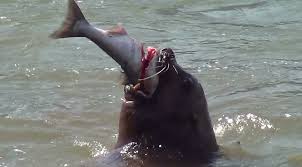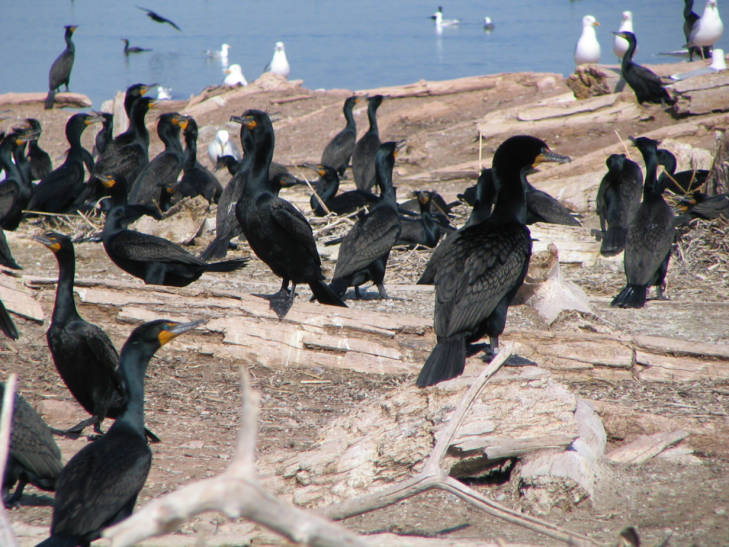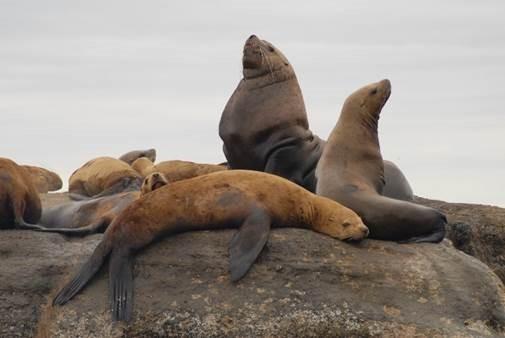European Green Crab Invasion In Washington Worsens: Researchers Using E-DNA To Contain, Prevent New Outbreaks
February 17th, 2022
European green crabs feast on shellfish, destroy marsh habitats by burrowing in the mud and obliterate valuable seagrass beds. The invasive species also reproduces quickly, making it a nightmare for wildlife managers seeking to control its spread in Washington’s marine waters.
Task Force Considers Sea Lion Removal At Bonneville Dam A Success; In 15 Years 214 Euthanized, 56,000 Salmon/Steelhead Avoid Predation
January 13th, 2022
NOAA Fisheries and its Pinniped Task Force closed a chapter of its program to lethally remove California sea lions from Bonneville Dam. Determining that the removal of the sea lions saved nearly 56,000 adult salmon and steelhead, the Task Force called the 15-year effort a success.
Montana Study Shows Climate Change, Invasive Species Driving Widespread Declines of Native Trout In Northern Rockies
January 13th, 2022
In a new study, University of Montana researchers found that climate change drives native trout declines by reducing stream habitat and facilitating the expansion of invasive trout species.
Report: 76 Salmon-Eating California Sea Lions Lethally Removed At Bonneville Dam Over Five-Year Period, Non-Lethal Hazing Ineffective
January 6th, 2022
Northwest states euthanized some 76 fish-eating California sea lions at Bonneville Dam over a five-year period through June 30, 2021, according to a recent report from the states to the National Marine Fisheries Service.
Montana Study Reveals How Invasive Species Over Time Disrupt Native Species’ Food Webs; Lake Trout Vs. Bull Trout
November 11th, 2021
Invasive species cause biodiversity loss and about $120 billion in annual damages in the U.S. alone. Despite plentiful evidence that invasive species can change food webs, how invaders disrupt food webs and native species over time has remained unclear.
Study Analyzes Non-Native Warmwater Fish Consumption Of Juvenile Salmon In Reservoirs; Walleye Predation Much Higher Than Native Pikeminnow
September 23rd, 2021
When warmwater fish species like bass, walleye and crappie that are not native to the Pacific Northwest, but prized by some anglers, overlap with baby spring chinook salmon in reservoirs in Oregon’s Willamette River they consume more baby salmon than native predatory fish per individual, new research found.
Sea Lion Removal Over Until Fall Chinook Return; Under New Rules Biologists Removed 33 Pinnipeds At Bonneville Dam, 9 At Willamette Falls
June 3rd, 2021
At the end of the first spring in which biologists have been allowed by federal permit to lethally remove both California and Steller sea lions in the Columbia and lower Willamette rivers, fisheries biologists have stopped the removal activity as sea lions have left Bonneville Dam and both rivers for coastal rockeries.
Evaluating Avian Predation Research: Science Panel Seeks Further Analysis On Effectiveness Of Bird Control Measures Aimed At Boosting Steelhead Survival
April 30th, 2021
The Independent Scientific Advisory Board has released an analysis of two studies offering differing views on the effectiveness of avian predation control measures in the Columbia River basin. The scientists say further comparative research is needed to determine if hazing and killing terns and cormorants are boosting steelhead smolt-to-adult returns.
WDFW Taking Comment On Recommendation To Keep Unlisted Status For Steller Sea Lions; 18,000 Animals In 1979 To 71,000
April 15th, 2021
The Washington Department of Fish and Wildlife is taking public input on its state status review for Steller sea lions.









